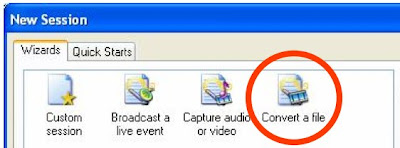I really like Microsoft PhotoStory. It's a simple, easy tool that lets teachers and students create digital stories. What's not simple is trying to play these stories on a Mac. This has become a problem because some of our teachers like to post their PhotoStory files on their class web site. Parents with Macs at home can't view them.
Flip4Mac is a free Quicktime plugin that allows the Mac Quicktime player to play Windows Media files (wmv's) but for some reason it will not seem to play files created by PhotoStory. Real Player for Mac won't play them either.
After a some research I discovered something about the PhotoStory Video Codec. Apparently Microsoft PhotoStory 3 does NOT use the standard Windows Media Video (WMV) codec but a special codec developed for compressing still images: Windows Media Video 9 Image v2.
One solution for playing these files on a Mac is to convert them to .mov files. I've used Zamzar and that seems to work but the file size increases. My 6.5MB Photostory file converted to a 16.2MB .mov file. Even though the file size more than doubles, the picture quality of the converted file doesn't seem to be as good.
Another solution is to use use Windows Media Encoder (another free download from Microsoft) to convert your PhotoStory file to a file that will play on Quicktime with the Flip4Mac plug-in.

When you convert your file using Windows Media Encoder, use the following settings:
- For "Content Distribution" select - File Download (Computer Playback)
- For "Encoding Options" select...
- Video - VHS Quality (250 Kbps VBR)
- Audio - CD Quality (VBR)
My 6.5MB photostory file converted to a 11.3MB wmv file that plays on my Mac.
Using media encoder seems to give me a better quality conversion and lower file size than using Zamzar and converting to a .mov file.
Now I just have to train our teachers to convert their completed video file before they post it online AND tell our Mac using parents that they need to download and install the Flip4Mac plug-in to view their class videos.
As I said, sometimes the solution is not that simple.



